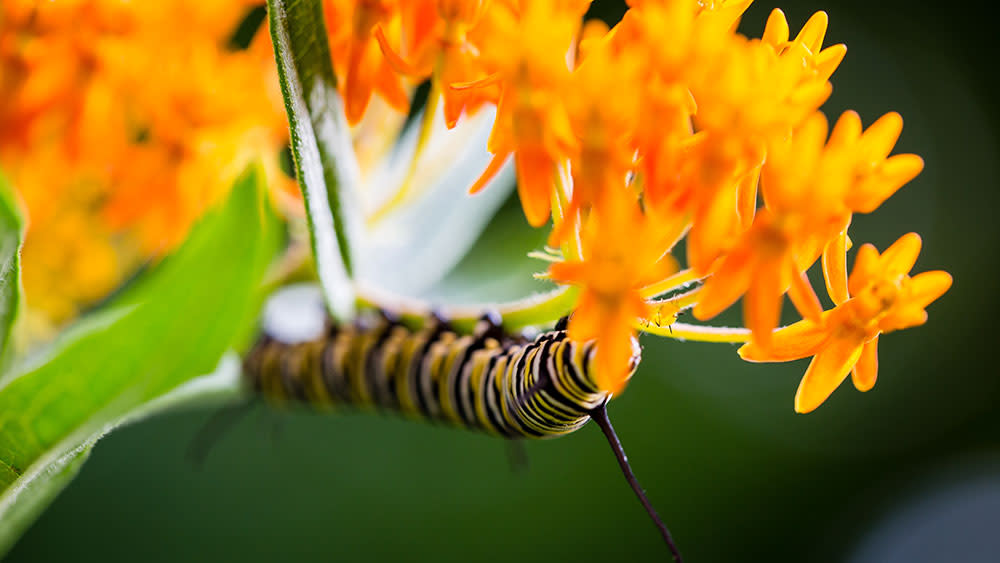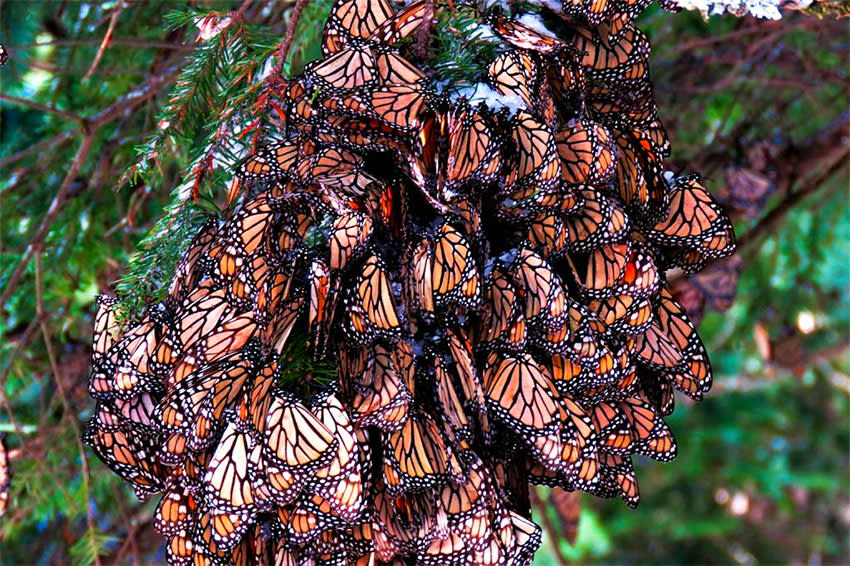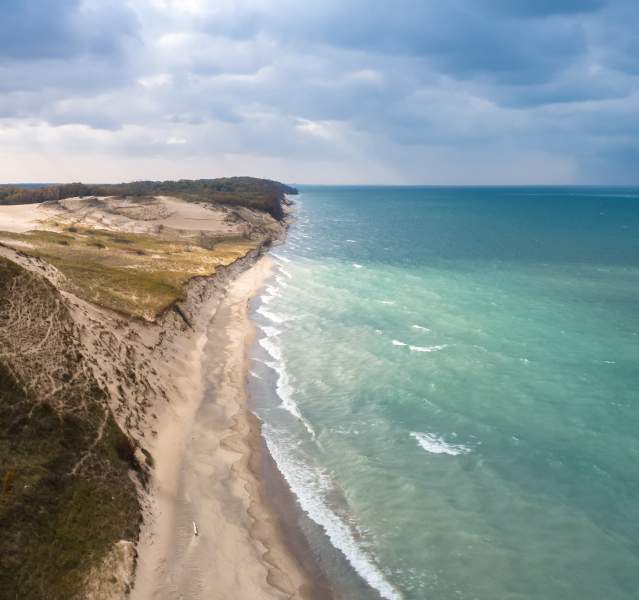Without a doubt, September is the month of the monarch.
I am loving all the monarch photos that people are posting to social media and sending to me via text and email. The photos of the brightly colored, seemingly perfect monarchs are stunning. With their bold and bright, orange and black wings, perched atop a magenta blazing star flower, these monarchs are a technicolor work of art just getting started on their life’s story.
Admittedly, my favorite monarch photos are those of the monarchs with the torn and tattered wings, faded and lackluster, and/or missing a leg. Those are the monarchs with whom I’d like to sit and have a cup of tea and hear the story of their adventures. Was it a tussle with another butterfly, a bird in hot pursuit, a near-miss with a vehicle, an incident with a praying mantis? What gave you these battle scars, my friend? If only those wings could talk…

Older monarch butterfly, nectaring on late-flowering boneset. Photo by A.Nyberg/TNC.
The state of a monarch’s wings in the fall tells us a lot about what is in store for that particular butterfly in the months ahead. Those with the more perfect wings are the ones who have freshly emerged from a late summer/early fall chrysalis and will ever so soon be making the long journey south to the mountains of central Mexico.
For these monarchs that will make the one to two-month journey south, their wings are larger than those of the monarchs who do not migrate. It’s the large powerful wings of the fall monarch that will carry them for weeks on end to the overwintering spot where they will rest with millions of other butterflies until the temperatures warm again and they can return north.
Another remarkable thing about these late summer/early fall monarchs is that they are in a state of reproductive diapause – there is no need for them to mate and produce the next generation so close to winter time, so they instead divert their energies towards developing flight muscles and storing fats for the long migration and winter survival.

If luck is on their side, these late summer butterflies will live 7 to 8 months. That is in stark contrast to the spring and early summer monarch whose lifespan is much shorter—a mere 2 months in which their sole purpose is to mate and lay eggs.
Spring and early summer female monarchs typically mate with several males and are capable of laying 400-500 tiny eggs, roughly the size of a grain of salt. These males and females flutter and flap tirelessly for just a few months to do their job—to create the next generation of monarch butterflies—and in doing so, their wings become tattered and torn.
This month, both the stunning-winged monarchs and the shabby-winged monarchs are feeding ravenously on the nectar of such native plants as blazing stars, Joe-Pye weed, field thistle, and boneset. The older butterflies are feeding to replenish their reserves and continue to look for mates. The young butterflies are feeding to prepare for the journey ahead.
The ultimate goal of both the young and the old is to ensure the success of the next generation of monarch butterflies. They’ll do this either by mating and creating the generation that will take the genes to Mexico or being the ones to make the journey. It is a true group effort in species survival.
This September, as I watch the young monarchs with dazzling wings nectaring on the native plants at Kankakee Sands, I can’t help but whisper, “God speed, fare-the-well, toodle-oo! May your journey to Mexico be swift, with the wind at your back. Please send your sons and daughters back in the spring. When you return, we will be ready with a garden celebration of milkweeds and wildflowers.”
To the tattered and torn winged monarchs, missing legs and in their final days, I simply say, with all my heart, “Thank you, thank you, thank you.”

Want to Help the Monarchs?
You and I can play a pivotal role in the survival of the monarch, too. Right now we can be planning our spring gardens—selecting native plants with large nectar resources, and most importantly planting milkweeds, the sole food on which the monarch caterpillars feed. No other plant in the whole world other than milkweed will support monarch caterpillars. There are many milkweeds to choose from, such as common milkweed, butterfly seed, swamp milkweed, and whorled milkweed.
We can also be learning more about monarchs and contributing to citizen science—both will deepen our own understanding and appreciation of monarchs while providing important data to the scientific community.
To learn about monarch butterfly citizen science projects, visit:
- University of Wisconsin – Madison’s Journey North which tracks monarch migration https://journeynorth.org/tm/monarch/FallWatch.html
- University of Kansas’ Monarch Watch to lend a hand in tagging monarchs that will be migrating to Mexico https://www.monarchwatch.org/
To participate in a hands-on learning experience about the Monarch Watch program to tag butterflies, join Friends of the Sands at The Nature Conservancy’s Kankakee Sands. More info at Friends of the Sands.
To celebrate monarchs and learn more about the rich history of Mexico by attending the East Chicago Festival de la Monarcha in Northwest Indiana.
The Nature Conservancy’s Kankakee Sands is an 8,300-acre prairie and savanna habitat in Northwest Indiana, open every day of the year for public enjoyment. For more information about Kankakee Sands, visit www.nature.org/KankakeeSands or call the office at 219-285-2184.

